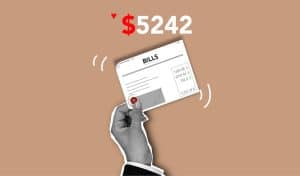What are Liabilities?
What is a liability?
In everyday language, we often think of liabilities as just debts that need to be paid off. However, for anyone looking to manage their finances effectively, understanding what liabilities are is crucial. Simply put, liabilities are debts that you owe to others – whether it’s a bank loan, credit card balance, or any other money that you owe. It’s important to note that liabilities can be long or short-term and they can be a mix of both. Read on to learn more about what liabilities are and why they matter in your financial wellbeing.
Types of Liabilities
There are several types of liabilities, and understanding them can help you better manage your financial wellbeing. Here are three types of liabilities that you should know about:
– Current/short-term liabilities – These are liabilities that are due within the next year. They might include things like credit card balances, payroll obligations, or any loans that are to be paid off soon.
– Long-term liabilities – These are the obligations that are due over a more extended period of time, generally more than one year. Think of a mortgage or a student loan that can take years to pay off.
– Unsecured liabilities – These are debts that are not backed by any collateral. For example, credit card debts or personal loans are examples of unsecured liabilities.
Why understanding liabilities is important
It’s crucial to understand liabilities because they impact your overall financial health and wellbeing. Having a lot of liabilities can make it challenging to achieve your financial goals, such as saving for retirement, buying a house, or going on a dream vacation. High levels of liabilities can also increase the likelihood of increasing your credit score, which will lead to higher interest rates and make it more difficult to secure credit in the future.
How to Keep Liabilities in Check
Keeping liabilities in check is essential to maintain financial stability. Here are some steps you can take to manage your liabilities successfully:
– Create a budget and stick to it. This will help you take control of your finances and avoid overspending that can lead to mounting debts.
– Prioritize paying off high-interest debts first. This will help you avoid accumulating more significant interests and reduce your overall liabilities.
– Don’t take on too much debt. It’s essential to live within your means and not take on more debts that you can handle.
– Save for emergencies. Having an adequate emergency fund can help you avoid taking on more loans when unexpected expenses arise.
How to Reduce Liabilities
Reducing your liabilities should be a top priority if you want to improve your financial wellbeing. Here are some ways you can reduce your liabilities:
– Consolidate high-interest debts into a single debt with a lower interest rate.
– Negotiate with creditors to restructure your debts. This may involve extending the payment period or renegotiating interest rates.
– Stop using credit cards to finance your lifestyle. If you can’t afford to pay for something in cash, re-evaluate whether you need it or not.
– Cut back on unnecessary expenses, redirecting the savings you make to pay off debts.
Conclusion
In conclusion, liabilities are an essential aspect of anyone’s financial wellbeing. Understanding the different types of liabilities and their impact on your financial situation can help you make informed decisions about your money. By keeping your liabilities in check and taking steps to reduce them, you can achieve your financial goals and ultimately enjoy a more comfortable life. Remember, it’s never too late to start managing your liabilities effectively. Take control of your finances today.


